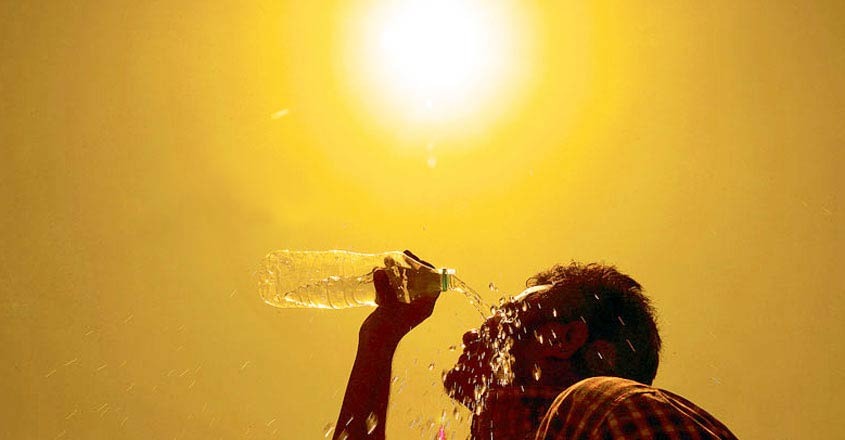Delhi Heatwave Survival Guide: IMD's Orange Alert and How to Stay Safe at 49°C
With an IMD orange alert in effect and real-feel temperatures hitting 49°C, Delhi's heatwave is a serious health risk. This ultimate guide provides essential, actionable steps to protect yourself and your family from heatstroke and dehydration. Learn critical do's and don'ts, how to spot danger signs, and what relief might be coming.
SOCIAL


The India Meteorological Department (IMD) has issued an orange alert for Delhi, warning residents of a severe heatwave with "real-feel" temperatures soaring to a dangerous 49°C. This isn't just typical summer heat; it's a potentially life-threatening weather event expected to persist until at least June 11th. Such extreme heat poses severe risks of heat exhaustion, heatstroke, and dehydration, demanding immediate and informed action.
This guide goes beyond basic tips to provide a comprehensive strategy for surviving this extreme weather, protecting your health, and safeguarding your loved ones.
Understanding the Alert: What an IMD Orange Alert Really Means
The IMD uses a color-coded system to warn the public about hazardous weather conditions. An Orange Alert is the second most severe level and signifies that the weather conditions have the high potential to cause illness, disrupt daily life, and pose a significant risk to vulnerable populations.
In practical terms, this alert means:
Dangerous Health Conditions: The heat is intense enough to cause heat-related illnesses in otherwise healthy individuals.
Government Readiness: Authorities and disaster management teams are put on standby.
Public Warning: A direct instruction for the public to take immediate precautions and avoid unnecessary risks.
Ignoring an orange alert can have serious consequences, as the body's natural cooling mechanisms can quickly become overwhelmed.
Why This Heatwave is So Dangerous: The Science of "Real Feel"
You might see two different temperatures: the ambient temperature and the "real feel" or "feels like" temperature (49°C). This difference is critical. The real-feel temperature accounts for:
Humidity: High humidity levels prevent sweat from evaporating efficiently. This evaporation is your body's primary cooling mechanism. When it fails, your core temperature can rise rapidly.
Solar Radiation: Direct sunlight can make the air feel significantly hotter than the recorded shade temperature.
Wind Speed: Ironically, a hot, dry wind can make you dehydrate faster, increasing the risk.
This combination creates a perfect storm where your body is under constant physiological strain, making the following precautions not just advice, but necessities.
Your Comprehensive Heatwave Action Plan
1. Strategic Timing: Avoid the Peak, Embrace the Cool
The sun's intensity is greatest between 12:00 p.m. and 3:30 p.m. During this window, the risk of heatstroke is at its highest.
Action: Treat these hours like a curfew. Postpone all non-essential travel and outdoor activities. If you must be outside, limit exposure to brief periods and seek shade constantly.
2. Hydration: Your First and Best Defense
Dehydration occurs long before you feel thirsty. In extreme heat, you need to be proactive.
Do: Drink water at regular intervals throughout the day. Set a timer if needed.
Do: Incorporate electrolyte-replenishing homemade drinks like lassi, buttermilk (chaas), lemon water (nimbu paani), and coconut water. These help replace salts lost through sweating.
Do: Keep Oral Rehydration Solution (ORS) at home. It's a lifesaver for rebalancing electrolytes.
Don't: Consume alcohol, coffee, tea, and carbonated sugary drinks. They are diuretics, meaning they cause your body to lose more water, accelerating dehydration.
3. Dress for Survival, Not Style
Your clothing is your personal shade.
Fabrics: Choose lightweight, light-colored, loose-fitting cotton or other breathable materials. Dark colors absorb heat, while tight clothing traps it.
Cover Up: Use a wide-brimmed hat, a umbrella, and UV-protection sunglasses. Dampening a cloth and placing it on your head and neck under a hat provides powerful evaporative cooling.
4. Create a Cool Oasis: Modifying Your Environment
If you don't have air conditioning, you must get creative.
Block the Sun: Keep windows, curtains, and shutters closed during the day to trap cooler air inside. Open them at night to cross-ventilate if the outside temperature drops.
Use Water: Take frequent cool (not ice-cold) showers or baths. Use a spray bottle to mist your skin. Place damp towels on pulse points (wrists, neck, ankles, temples).
Fans Aren't Enough: In extreme, dry heat, fans simply move hot air around. In humid conditions, they can accelerate dehydration. Use them in conjunction with damp cloths for a cooling effect.
5. Eat Smart: Light and Fresh Meals
Digesting food generates metabolic heat. Large, heavy meals make your body work harder, raising its internal temperature.
Do: Eat small, frequent, light meals. Focus on fresh fruits and vegetables with high water content (e.g., watermelon, cucumber, oranges, lettuce).
Don't: Avoid high-protein, spicy, and oily foods during the hottest parts of the day.
Critical: Do not eat stale food. Bacteria multiply rapidly in heat, drastically increasing the risk of food poisoning.
Protecting the Most Vulnerable
Heatwaves are hardest on:
The Elderly: Their bodies are less efficient at regulating temperature.
Young Children: They have a higher metabolic rate and often depend on others for water and care.
People with Chronic Illnesses: Those with heart, kidney, or respiratory problems are under extra strain.
Outdoor Workers: Construction workers, traffic police, delivery personnel, and street vendors are at extreme risk.
Community Care is Crucial: Check on elderly neighbors, relatives living alone, and those without cooling. A simple phone call or visit can save a life. Never, under any circumstances, leave a child or pet in a parked car. The interior temperature can become lethal within minutes.
Recognizing a Medical Emergency: Heat Exhaustion vs. Heatstroke
Knowing the signs could save a life.
Heat Exhaustion (Get Help Immediately):
Heavy sweating
Cold, pale, and clammy skin
Fast, weak pulse
Nausea or vomiting
Muscle cramps
Dizziness or fainting
Action: Move to a cool place, loosen clothing, sip water, and apply cool, wet cloths. Seek medical attention if symptoms worsen or last longer than an hour.
Heatstroke (A Medical Emergency - Call 102/112 immediately):
High body temperature (104°F/40°C or higher)
Hot, red, dry, or damp skin (sweating may have stopped)
Fast, strong pulse
Confusion, slurred speech, or agitation
Unconsciousness
Action: This is a 911-level emergency. Call for an ambulance immediately. Move the person to a cooler place and use cool cloths or a cool bath to lower their temperature until help arrives. Do not give them anything to drink.
